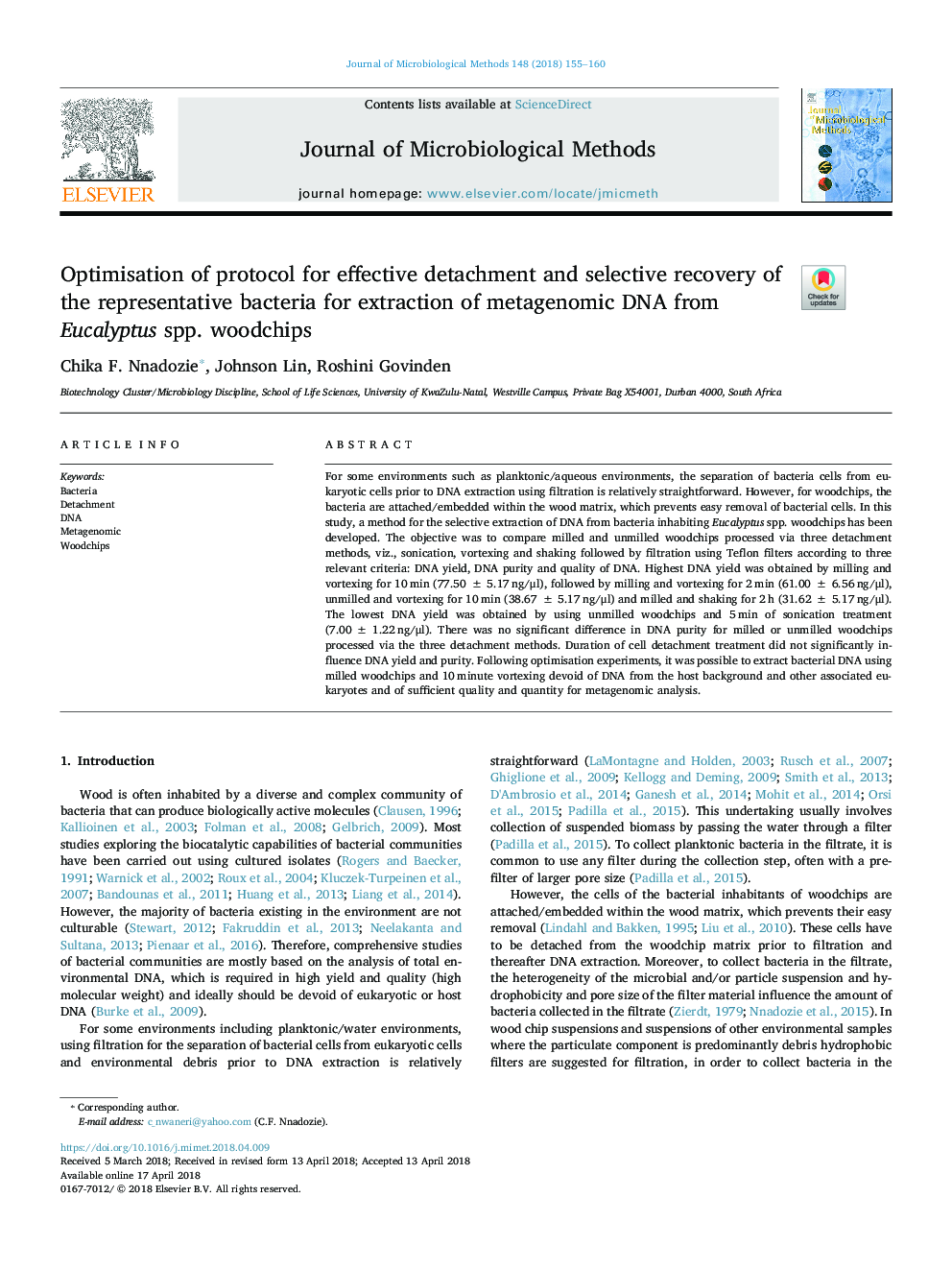| Article ID | Journal | Published Year | Pages | File Type |
|---|---|---|---|---|
| 8420420 | Journal of Microbiological Methods | 2018 | 6 Pages |
Abstract
For some environments such as planktonic/aqueous environments, the separation of bacteria cells from eukaryotic cells prior to DNA extraction using filtration is relatively straightforward. However, for woodchips, the bacteria are attached/embedded within the wood matrix, which prevents easy removal of bacterial cells. In this study, a method for the selective extraction of DNA from bacteria inhabiting Eucalyptus spp. woodchips has been developed. The objective was to compare milled and unmilled woodchips processed via three detachment methods, viz., sonication, vortexing and shaking followed by filtration using Teflon filters according to three relevant criteria: DNA yield, DNA purity and quality of DNA. Highest DNA yield was obtained by milling and vortexing for 10â¯min (77.50â¯Â±â¯5.17â¯ng/μl), followed by milling and vortexing for 2â¯min (61.00â¯Â±â¯6.56â¯ng/μl), unmilled and vortexing for 10â¯min (38.67â¯Â±â¯5.17â¯ng/μl) and milled and shaking for 2â¯h (31.62â¯Â±â¯5.17â¯ng/μl). The lowest DNA yield was obtained by using unmilled woodchips and 5â¯min of sonication treatment (7.00â¯Â±â¯1.22â¯ng/μl). There was no significant difference in DNA purity for milled or unmilled woodchips processed via the three detachment methods. Duration of cell detachment treatment did not significantly influence DNA yield and purity. Following optimisation experiments, it was possible to extract bacterial DNA using milled woodchips and 10â¯minute vortexing devoid of DNA from the host background and other associated eukaryotes and of sufficient quality and quantity for metagenomic analysis.
Related Topics
Life Sciences
Biochemistry, Genetics and Molecular Biology
Biotechnology
Authors
Chika F. Nnadozie, Johnson Lin, Roshini Govinden,
